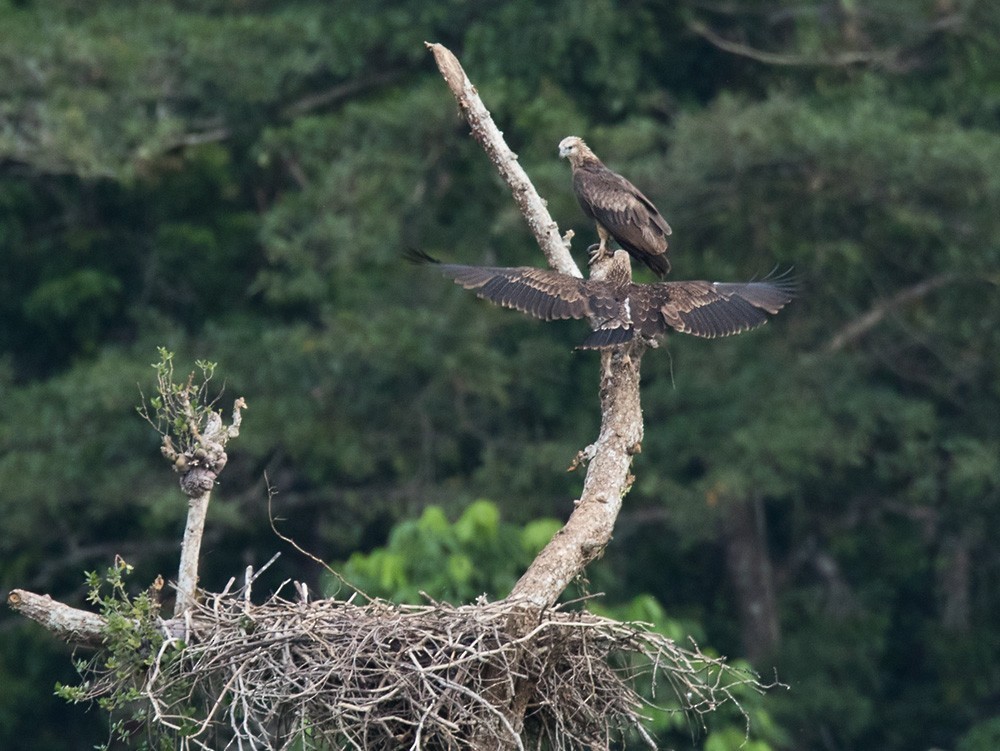Sanford's Sea Eagle
A species of Sea eagles Scientific name : Haliaeetus sanfordi Genus : Sea eagles
Sanford's Sea Eagle, A species of Sea eagles
Botanical name: Haliaeetus sanfordi
Genus: Sea eagles
Content
Description General Info
 Photo By Lars Petersson
Photo By Lars Petersson Description
Sanford's sea eagle was discovered by and named after Dr Leonard C. Sanford, a trustee for the American Museum of Natural History. The first description was by Ernst Mayr in 1935. It can reach a length between 70–90 cm (28–35 in) and a weight between 1.1–2.7 kg (2.4–6.0 lb). The wingspan is between 165–185 cm (5.41–6.07 ft). It is the only large predator on the Solomon Islands. The eagles inhabit coastal forests and lakes up to an altitude of about 1500 m asl. The plumage is whitish brown to bright brown on the head and the neck. The underparts are brown to reddish brown and dark brown. The upperparts are darkish brown to gray-black. The eyes are bright brown. Uniquely among sea eagles, this species has an entirely dark tail throughout its life. The breeding season is from August to October. The nest consists of two eggs. The diet consists of mainly of tideline carrion, fish, molluscs, crabs, tortoises, and sea snakes, and more rarely birds and megabats snatched from the rainforest canopy. It has also been reported to feed opportunistically on the northern common cuscus. It forms a superspecies with the white-bellied sea eagle. As in other sea eagle species pairs, the other taxon is white-headed. These two are genetically very close, it seems; their lineages separated not longer ago than 1 mya, probably only in the Middle Pleistocene, a few 100,000 years ago. Both share a dark bill, talons, and eyes with the other Gondwanan sea eagles. This eagle is often illustrated on postage stamps of the Solomon Islands. 
Size
90 cm
Nest Placement
Tree
Feeding Habits
Sanford's Sea Eagle has a varied diet, including cuscus, fruit-bats, domestic animals, fish, ducks, pigeons, and carrion. Its feeding behavior involves patrolling or perching by coastlines to hunt or scavenge, often snatching arboreal prey from canopies and pirating fish from Ospreys.
Habitat
Sanford's Sea Eagle typically inhabits a range of environments from coastal areas to lowland and montane forests. They are also found in open, human-modified terrains and riverine regions adjacent to primary rainforests. These birds show a preference for forested coastlines but have the versatility to hunt well inland and in areas lacking dense forest cover. Although present in broader coastal regions, some individuals, especially those on eastern islands, may reside entirely in inland habitats.
Dite type
Piscivorous
General Info
Feeding Habits
Bird food type

 Photo By Lars Petersson
Photo By Lars Petersson